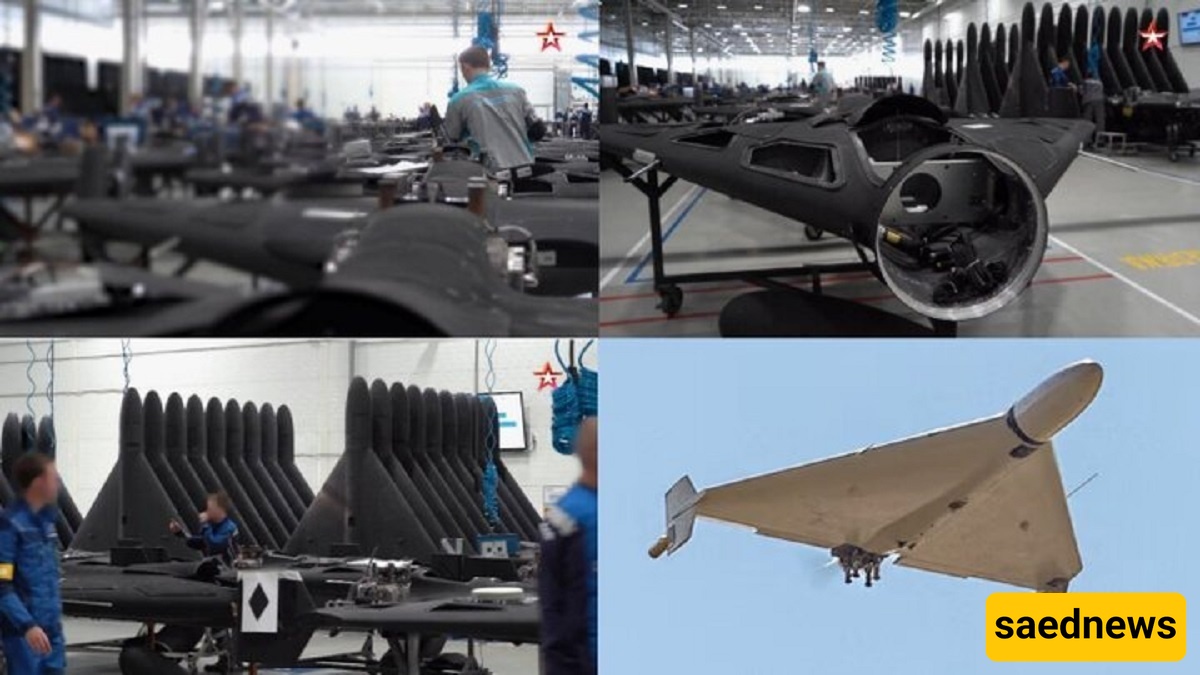SAEDNEWS: Russia’s construction of a mega-factory to mass-produce domestically adapted versions of Iranian drones marks a turning point in their military partnership. The move reduces Moscow’s reliance on Tehran, cuts off a lucrative Iranian export, and signals a shift toward competition in both the battlefield and global arms markets.

According to SaedNews, citing CNN, Russia — which until just a year ago was the main buyer and consumer of Iranian drones in the Ukraine war — has now sidelined Tehran from the supply chain by building a mega-factory on its own soil to produce domestically adapted versions of those same drones. This industrial and strategic shift not only reduces Moscow’s dependence on Tehran, but also signals a change in the balance of power in the two countries’ military cooperation — a change that could ultimately lead to a complete redefinition of Iran–Russia relations.

At the start of the Ukraine war, sweeping Western sanctions and the erosion of Russia’s arms production capacity pushed Moscow toward importing affordable and effective equipment from Iran. The Shahed-136 suicide drones, known for their long range and low manufacturing cost, became a vital part of Russia’s arsenal.
However, battlefield experience and the urgent need for mass production prompted the Kremlin to pursue full technology transfer and establish a domestic production line. The construction of a massive factory in Tatarstan — with a capacity to produce thousands of drones annually — was a direct response to this need.
With the opening of this factory, Iran’s role has been downgraded from “critical supplier” to “original designer.” In the defense industry, localization usually means the gradual elimination of the foreign partner. Russia now holds complete control over the production chain, from parts manufacturing to final assembly. This development not only strips Iran of the economic benefits of drone exports, but also allows Moscow to develop improved versions in the future without Tehran’s involvement.
Iran–Russia military cooperation has always been driven by short-term interests and a shared threat from the West. Within this framework, Russia has consistently extracted maximum benefit from its partner, and, once no longer dependent, charted its own path.
The localization of Iranian drones fits neatly into this pattern: the Kremlin exploited its urgent need for weapons, absorbed the technology, and is now moving toward complete independence. This shift underscores that Moscow values alliances only as long as they serve its interests — not a day longer.
For Russia, domestic drone production not only reduces dependency but also enables both quantitative and qualitative expansion. Without import restrictions or shipping delays, Moscow can quickly meet frontline demands, exerting greater psychological and operational pressure on Ukraine.
Conversely, Iran loses direct access to Ukraine war data and battlefield feedback — critical for improving future designs.
Drone exports to Russia had been a valuable source of revenue for sanctions-strapped Iran. With production moved to Russian soil, this income stream will be cut off or severely reduced. Furthermore, the Iranian drone brand in global markets now faces competition from Russian-made versions, which potential buyers may find more attractive — and possibly cheaper — than direct Iranian imports.
In recent years, Tehran–Moscow relations have been based on “overlapping needs” rather than formal, binding commitments. Cutting Iran out of the drone production cycle serves as a warning to Iranian policymakers who have leaned too heavily on this alliance. Without clear agreements and legal guarantees, any military partnership can quickly turn into a rivalry — or even a clash of interests.
A hidden concern in this development is the possibility that Russia could use Iranian technology as a base to create more advanced drones — and then export them to third countries, possibly even Iran’s rivals. In that case, technology originally meant to boost Iran’s deterrence could one day end up in enemy hands.
Need for clear technology transfer contracts: Without precise legal frameworks, any industrial partnership risks becoming a one-way technology drain.
Diversification of defense export markets: Relying on a single major buyer increases vulnerability.
Investment in domestic innovation: Technological competition is only possible by moving beyond current designs.
Active defense diplomacy: Engaging multiple partners can help maintain balance in relations.
Russia’s shift from importing Iranian drones to mass domestic production is not just an industrial change — it is a strategic message. The message is that even the closest military partners measure alliances by momentary interests. For Iran, this event should serve as a warning: in a world where competition and opportunism dominate, relying on unguaranteed alliances carries a high risk.
Moscow may be a partner today, but tomorrow it could become a full-blown rival — both in the market and on the battlefield. The key question is whether Tehran sees this shift as a threat to its position or as an opportunity to rethink its defense and industrial strategy.

